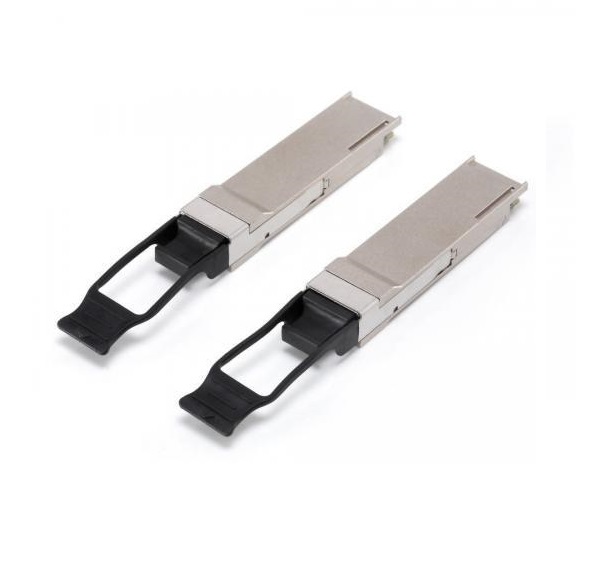- Sales SupportContact Sales
- Call us at: +(86) 15211074652
- Send us a email at: info@zr-fibercable.com
QSFP-40G-BiDi vs QSFP-40G-SR4: Making the Right Choice
As the demand for high-speed data transmission increases, choosing the right optical transceiver module becomes crucial for network architects and administrators. When it comes to 40 Gigabit Ethernet (GbE) connectivity, two popular options are the QSFP-40G-BiDi and QSFP-40G-SR4 transceivers. Both offer high-performance capabilities, but they have distinct features and applications. This article aims to compare QSFP-40G-BiDi and QSFP-40G-SR4 transceivers, providing insights to help you make an informed decision.
I. Understanding QSFP-40G-BiDi:
Bi-Directional Transmission:
QSFP-40G-BiDi allows for bi-directional transmission over a single pair of fibers, using wavelength division multiplexing (WDM) technology.
It enables simultaneous transmission and reception on the same pair of fibers, reducing the required fiber infrastructure and simplifying cabling.
Fiber Compatibility and Reach:
QSFP-40G-BiDi operates using OM3 or OM4 multimode fibers, which are widely deployed in data centers.
It supports transmission distances up to 150 meters using OM4 fibers and up to 100 meters using OM3 fibers.
Cost-Effective Solution:
QSFP-40G-BiDi requires only two fibers, unlike QSFP-40G-SR4, which uses eight fibers, resulting in reduced fiber infrastructure costs.
It allows for easy migration from 10GbE to 40GbE, leveraging the existing duplex fiber infrastructure and eliminating the need for additional fibers.
Potential Limitations:

QSFP-40G-BiDi transceivers are not backward compatible with legacy 1GbE or 10GbE transceivers, requiring network upgrades for compatibility.
The maximum reach of QSFP-40G-BiDi is limited compared to QSFP-40G-SR4, which might be a factor to consider for longer-distance connections.
II. Understanding QSFP-40G-SR4:
Parallel Transmission:
QSFP-40G-SR4 uses parallel transmission, employing four pairs of fibers (eight fibers in total) for simultaneous data transmission and reception.
Each pair of fibers carries a separate 10 Gbps data stream, resulting in a total aggregated bandwidth of 40 Gbps.
Fiber Compatibility and Reach:
QSFP-40G-SR4 operates using OM3 or OM4 multimode fibers, similar to QSFP-40G-BiDi.
It supports transmission distances up to 100 meters using OM4 fibers and up to 70 meters using OM3 fibers.
Compatibility and Scalability:
QSFP-40G-SR4 offers backward compatibility with existing 10GbE SR transceivers, enabling seamless integration with legacy networks.
It provides a scalable solution, allowing easy migration to higher data rates such as 100GbE in the future.
Considerations:
QSFP-40G-SR4 requires more fibers compared to QSFP-40G-BiDi, which might increase cabling complexity and fiber infrastructure costs.
It is important to consider power consumption as QSFP-40G-SR4 typically consumes more power than QSFP-40G-BiDi.
III. Choosing the Right Option:
Distance Requirement:
If the transmission distance is within the range supported by QSFP-40G-BiDi (up to 150 meters with OM4), it offers a cost-effective and simplified cabling solution.
For longer distances beyond the reach of QSFP-40G-BiDi, QSFP-40G-SR4 is a suitable choice, providing compatibility with legacy transceivers.
Existing Infrastructure and Compatibility:
If compatibility with existing 10GbE infrastructure is a requirement or if future scalability to higher data rates is anticipated, QSFP-40G-SR4 is a preferred option.
QSFP-40G-BiDi is advantageous when leveraging the existing duplex fiber infrastructure and reducing cabling complexity.
Cost Considerations:
QSFP-40G-BiDi can be more cost-effective in terms of fiber infrastructure, particularly when considering the reduced number of fibers required.
QSFP-40G-SR4 may be more suitable if compatibility with legacy systems and scalability to higher data rates are essential.
Choosing between QSFP-40G-BiDi and QSFP-40G-SR4 transceivers depends on various factors such as transmission distance, existing infrastructure, compatibility requirements, and cost considerations. QSFP-40G-BiDi provides a simplified cabling solution, reduced fiber infrastructure costs, and an easy migration path from 10GbE to 40GbE. QSFP-40G-SR4 offers compatibility with legacy transceivers, scalability to higher data rates, and longer transmission distances. Evaluating the specific needs of your network and considering the advantages and limitations of each option will guide you in making the right choice for your 40GbE connectivity requirements.
You might be interested in
We use cookies to ensure that we give you the best experience on our website. By clicking on "Accept" or continuing to use this site, you agree to our use of cookies in accordance with our Cookie Policy .You can refuse the use of cookies here.
Accept

